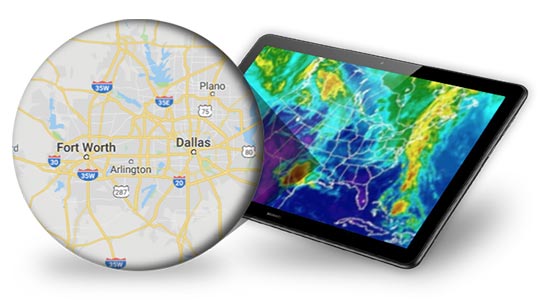24/7 Emergency Services
August 2016:


Water damage occurs when you have water flooding the house from an inside source. Flood damage occurs when water enters the house from an external source (ex. Heavy rains, rivers, oceans, lakes, ect.)
That part is easy to figure out. Adjusters know it, agents know it, contents pros know it.
But we have listened to aggravated home owners as well as renters arguing with insurance company representatives without any apparent comprehension at all.
Contents professionals can act as a bridge between insurance representatives and the often highly emotional insured.
Most contents managers are trained to speak with homeowners and to create a warm working relationship with them. They do that by asking questions. It starts out with such simple things as, “Do you know where the water originated?” or “Are there any electronic devices that got wet?” or “Do any members of your family have health issues that might be affected by mold, disinfectants, ect.?” or “Are there any special items you would like to point out before we start?”
Soon the homeowner begins to see the contents pros as competent, trusted allies.
There is also an initial walkthrough with pictures being taken of all four corners in every room, water damaged items, electronics, high-ticket items, things that matter to the owner. And all these images are made available to the adjuster – making his/her job much easier.
Of course when the adjuster or agent is onsite, he/she can easily take pictures and discusses things with the owner. But, when insurance company representatives cannot be presented, the contents pros become even more valuable.
In a water damage case, there are many things that even a video camera cannot show (ex. Just how wet is that leather couch?)
Contents professionals are known to help bring “peace to the adjuster’s valley” and to move the job forward with remarkable efficiency.
But even more important, they save extraordinary sums for the insurance company by restoring wet and contaminated items instead of replacing them.
Estimates range from at least 30% to as high as 95% under average replacement costs – and that is significant! Adjusters, agents, property managers and others have long since come to the conclusion that the contents pros are worth their weight in platinum. Not just because they help the insurance representatives look remarkably good to the insured, but because they help them clear their desks of challenging cases (which helps them look very good to their respective bosses).
Water damage cases are often multi-layered. Contents professionals have systems in place to make such cases relatively unproblematic and stress free for all concerned. If you have ever hired an untrained company, you already know the difference – putting value items in boxes is easy. Finding those items (without a system) is remarkably difficult. Retrieving them undamaged and restored to pre-loss condition can only be achieved by a team that knows what it is doing.
And perhaps not-too-surprising, the trained professionals don’t cost a peny more than the untrained teams – in point of fact they save measurability more in virtually every job.
Sticky Situation
Imagine this: The contents professionals are finally brought in. The fire fighters, who tracked in tar, grease, mud and oil from the devastation outside, have gone. The structural team is packing up and leaving adhesives, tape residue and even other job-related, sticky substances in their wake.
The adjuster realizes that the carpeting is probably a total loss even though the carpeting is probably a total loss even though the carpet team says they can still dry it out. New carpet will cost a fortune, but with tar, grease, oil and adhesives all over it, no homeowner could be expected to accept that it has been restored to pre-loss condition.
Then the contents pros set to work with a new specialty solvent. It breaks down adhesives, tar, gum, oil, tape residue and a host of other unwanted stains. It turns into a gel upon contact and does not penetrate the carpet backing (a disaster if it breaks down the glues used in modern carpet installation.
The dwell time is minimal, the carpet is cleaned and returned better than before it became saturated with water and decorated with black footprints and sticky trails.
This is only one of the new items contents pros use to keep the job moving forward – saving massive sums for the carrier.
Communication Simplifies Everything
On any restoration job, the contents manager can tell you that communication is the hallmark of excellence. Without it no assignment can be completed properly, within budget and to everyone’s satisfaction.
For example, let us say that an adjuster walks into a kitchen, takes a look around and says, “Well, since the fire started in the laundry room, it doesn’t look as if anything in here was affected much, so just soot sponge the visible surfaces and move on to something else.”
But the contents manager says, “Charlie, have a look”, and swipes a sponge or white microfiber cloth behind a hutch and inside a closed cabinet. The sponge or cloth shows black carbon stains. The smoke damage was invisible to the casual observer, but very visible now.
If the adjuster is only available by Skype, the demonstration can be made on camera. If the adjuster is only available by telephone, snap shots can be taken and shared – but nothing happens until there is open, honest and transparent communication.
An owner who pulls out bowls for her kid’s breakfast would be very disappointed if she found black specks floating in the milk and cornflakes (or smoke odors wafted out on a warm summer’s day). But because the contents manager treated the adjuster like a valued partner, the job can be completed in a timely, cost effective and highly satisfactory manner.

In an article for Cleanfax Magazine, insurance adjuster Peter Crosa explained an often misunderstood concept: “Here’s something a lot of restoration contractors, just like you, don’t know. Insurance adjusters tend to put restoration contractors into two categories. You are either ‘one of ours or you are one of theirs.’
”What that means is that if you’ve been called into a loss scenario (regardless of your specialty) by the policyholder rather than the adjuster, you are on the wrong team. If he doesn’t already know you, the adjuster may automatically mistrust you.”
And he went on to say, “You have to find an opportunity to make sure the adjuster knows three things:
First, you didn’t know the policyholder prior to being called.
Second, you are keenly interested in projecting an accurate and fair assessment.
Third, you are repulsed by people who try to rip off insurance companies.
And here is a big surprise! Contents companies don’t want to deal with most clients unless they have an adjuster or agent involved. When a potential client says, “Just send the bill to my landlord,” or “I’m pretty sure the condo board takes care of that – I pay a monthly fee to them,” or “the street flooded and the water came in my front door,” we need an insurance representative to help us discover if this client is even covered and can pay us (yes, we can read a policy as well as he next guy, but until an adjuster or agent says “yes” we are sometimes stuck in “neutral”).
We don’t want to bypass you, we need your input to see to it that we will get paid. And equally important is that you need us to see to it that you don’t pay out a fortune when a much smaller amount would allow you to restore the insured’s home to pre-loss condition.
We need to know the limits of the policy and we appreciate your interpretation. We will supply you with a strong scope, complete with digital photographs, an inventory, “man-hours”, supplies and activities. The happier you and the insured are, the more jobs you will assign us.
We have no interest in “working around” you. We need you as much as you need us.
Black Water Solution
Contents professionals do not like working on “black water” jobs any more than the homeowners like a home filled with such bacteria laden media.
So the front like workers are constantly looking for fast acting, powerful remedies for such assignments. In past editions of Contents Solutions, we have told you about the mist that can decontaminate thousands of feet inside buildings (without the damage sometimes caused by ozone). And we have shared the good news about electrolyzed water and the new disinfectants that are “human friendly.”










